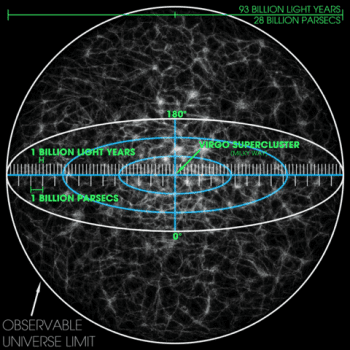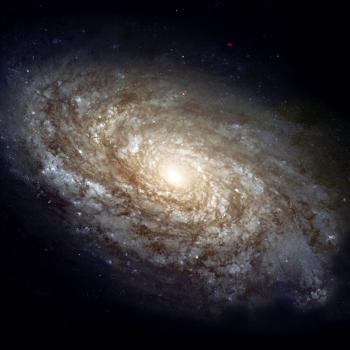
Galaxy NGC 2857 offers us a perfect view of a spiral galaxy.
Public domain image from the European Southern Observatory
On pages 89-90, Carlo Rovelli, Reality Is Not What It Seems: The Journey to Quantum Gravity, translated by Simon Carnell and Erica Segre (Penguin, 2017), tells an interesting and instructive story from twentieth-century physics. One of the more dedicated detractors of my blog likes to dismiss my science-related entries here as “junk science.” At the risk of drawing that epithet from him yet again, I share a passage from Dr. Rovelli’s book that I’ve copied for my notes.
In 1917, when Albert Einstein was trying to work the concept of a 3-sphere into his equations, he found himself encountering a problem:
He is convinced that the universe is fixed and immutable, but his equations tell him that this is not possible. It isn’t difficult to understand why. Everything attracts, therefore the only way for a finite universe not to collapse on itself is for it to be expanding: just as the only way to prevent a football from falling to the ground is to kick it upwards. It either goes up, or falls down — it can’t stay still, suspended in the air.
But Einstein does not believe what his own equations are telling him. He even makes a silly physics mistake (he does not realize that the solution he considers is unstable) just to avoid accepting what his theory predicts: the universe is either contracting or expanding. He modifies his equations, trying to avoid the implication that it is expanding. It is for this reason that he adds the term Lgab in the equation written above [Rab – 1/2Rgab + Lgab = 8pGTab].* But it is a further mistake: the added term is correct, but it does not change the fact that the equation predicts that the universe must be expanding. For all his bravery, Einstein the genius lacks the courage to believe his own equations.
A few years later Einstein is forced to give up: it is his theory that is right, not his reservations about it. Astronomers realize that all galaxies are indeed moving away from us. The universe is expanding, exactly as the equations predicted. Fourteen billion years ago, the universe was concentrated almost to a single, furiously hot point. From there it expanded in a colossal ‘cosmic’ explosion — and here the term ‘cosmic’ is not used in any rhetorical sense: it is, literally, a cosmic explosion. This is the ‘Big Bang’.
Today we know the expansion is real. The definitive proof of the scenario foreseen by Einstein’s equations arrives in 1964, when two American radio-astronomers, Arno Penzias and Robert Wilson, discover by accident a radiation diffused throughout the universe which turns out to be precisely what remains of the original immense heat of the early universe. Once again, the theory turns out to have been correct, up to its most amazing predictions.
* Please note that, owing to a peculiarity in the blogging software that I’ve been unable to evade, I’ve been obliged to substitute a Roman capital L for the Greek majuscule lambda that should properly be there.












